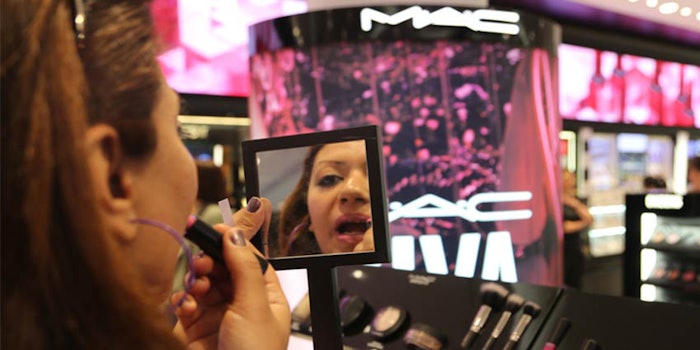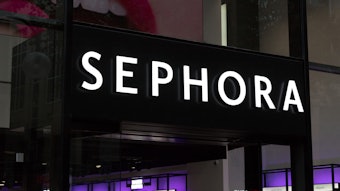
In the early days of my career there were really only three main channels for retailing cosmetics: department stores, drug stores and Walmart. There was some professional beauty going on in salons, but Sally Beauty and other outlets were just starting up.
Today, there are major changes afoot in the retail arena—and it’s not all about e-commerce. The changes have to do with the traditional suspects that built the prestige and mass business over the last 60 years. Due to their consolidation, there are now fewer traditional retail channels, and it’s getting costlier every year to survive in them.
Today, Sephora is the go-to retailer for any new prestige brand because its traffic amongst the younger female population far exceeds that of department stores. However, Sephora is a lot pickier now and has many of its own brands from LVMH and Kendo, which will give it more margin than other brands.
Declining Traffic, Escalating Costs
The department store was the main go-to place for cosmetics; even mass lines such as Revlon were big in this channel. The perfumes were mainly from France, and the skin care lines were generally the big brands, such as Arden, Lauder and some others that are no longer in business.
There were many regional department store chains. Macy’s was largely confined to the Northeast, and regional chains, such as Gimbels, Wanamaker, Jordan Marsh, Burdines and Carsons, were omnipresent.
Today, the business has consolidated and Macy’s is the main middle class department store, flanked by Kohl’s, Sears and J.C. Penney at the lower end, and specialty department stores, such as Barneys, Saks, Bloomingdale’s, Neiman Marcus and Nordstrom, on the upper end.
While there are still some regional chains holding on, like Dillards, Belks and, at the lower end, Stage, every year more and more stores are closing. The challenge in the cosmetic department in department stores has been twofold.
First, traffic continues to decline due to the competition in the mall from specialty stores, including Sephora. Second, the cost of doing business for a cosmetic brand continues to escalate.
Beauty adviser salaries and overheads continue to go up. There is tremendous attrition as this is no longer the glamorous job it once was. Promotional costs in displays, gift s and blockbusters also continue to climb, and so it is literally cost prohibitive to enter this channel for a startup brand unless there is already existing pent-up demand.
The Sephora Effect
Because of the department stores’ challenges, a new face in cosmetic retail began to take shape about 20 years ago: the specialty open-sell cosmetic store. The most famous of these is Sephora, which started about 15 years ago. The retailer was not successful, initially, because the big brands were still married to the department stores and feared that they would be punished if they expanded outside the traditional store channel.
Sephora stuck with the program and, in its early days, mostly offered somewhat smaller startup brands, in addition to those from its LVMH stable. Some of these brands were growing rapidly, for instance Bare Escentuals, which benefited from its success on QVC.
Today, Sephora is the go-to retailer for any new prestige brand because its traffic amongst the younger female population far exceeds that of department stores. However, Sephora is a lot pickier now and has many of its own brands from LVMH and Kendo, which will give it more margin than other brands.
Unique Mix and Reach
On the professional side, chains like Sally Beauty and its sister store, CosmoProf, proliferated. The activity in the professional channel gave the impetus to Lyn Kirby, who developed the other go-to national specialty retailer, Ulta.
Ulta has one of the most unique product mixes in the retail cosmetic industry, featuring mass, prestige and professional brands. As a result, the retailer can reach a much wider audience than Sephora, and it is extremely successful in the bedroom communities in the United States.
Following Ulta’s success, others are have jumped in. In fact, Kirby, the former CEO of Ulta, joined Beauty Brands to build that chain into a similar positioning. Other retail chains—such as Space NK, from the United Kingdom, and Bluemercury— are also offering a specialty open-sell environment, which makes it more conducive for smaller brands to flourish.
Going full circle, department stores could get more entrepreneurial, like the home shopping channels, and become incubators for some startup and indie brands.
Winners and Losers
The retail marketplace continues to change and adapt to the new economic realities presented by all of this specialty store activity. In addition to Sephora entering JC Penney, Macy’s has installed open-sell areas—called Impulse—in some stores.
The Macy’s initiative is really just a smaller version of the Sephora in JC Penney but, unlike JC Penney, it still competes with the full-service counters. Macy’s also recently bought Bluemercury, so it is probably a foregone conclusion that Bluemercury will pop up in Macy’s in the same way that Space.NK.Apothecary appears in Bloomingdale’s.
Will these shop-in-shops work? If the brands are the same as those sold by Sephora or Ulta, why would the customer go for them if they are already well distributed elsewhere? The conventional logic is that someone will lose.
Options for Startups and Retailers
So what does a startup brand do if the cost to enter a department store or Sephora is so high and even Ulta is asking for higher margins and more spending in-store to drive sales? If you are a smaller brand with limited resources, entering any of these channels is becoming cost prohibitive.
The professional beauty channel is one option. Its cost of entry is much lower compared to department and specialty stores. However, there are few national chains and—excepting the hair category— the sales volumes are a fraction of an Ulta.
Going full circle, department stores could get more entrepreneurial, like the home shopping channels, and become incubators for some startup and indie brands. Even if the volumes are not there, this may spark some interest from the consumer to go to the department store to see something really innovative and different.
This is what Sephora did in its early days, and, although it may not have brought in lots of volume, it created a platform for new brands. What a refreshing idea— showcase some indie products, rather carrying the same brands that Sephora and Ulta already sell.
This is what Bloomingdales did with Space.NK.apothecary, and it worked. Space. NK.apothecary sales grew faster the general cosmetic department of the big brands. I guess that was the plan and also the reason behind their acquisition of Bluemercury, but will that be enough to save the cosmetic department in the department store? Time will tell.
Alternative Channels, Mass, Travel and More
In my next article, I will address some good potential avenues for building brand awareness at a lower cost in other channels. And future editions will discuss the mass channel, travel retail and international. So stay tuned for more ideas for startup cosmetic brands.
About This Series
Having been in this industry for more than 35 years, I have seen lots of changes in the retail marketplace. About six years ago, Cosmetic Executive Women (CEW) decided to allow men to join the organization. I was probably one of the first to sign up.
CEW had a service for members called MentorNet (pro bono) for industry newbies to learn from the veterans like me about how to deal with managing a business. When I signed up for MentorNet, CEW told me that I may not get too much interest. Within days I had heard from many young women.
Some were in the big companies, but the vast majority had their own brands and wanted some sage advice. To date, I have mentored more than 60 women through CEW’s program. It is through these interactions that I decided to write my own blogs on my insights into the industry.
Now I've been asked to extend my thoughts to a number of articles for Global Cosmetic Industry that are geared to help these new startup brands deal with the new realities of retail. I welcome your questions, feedback and ideas for future article topics at [email protected].










